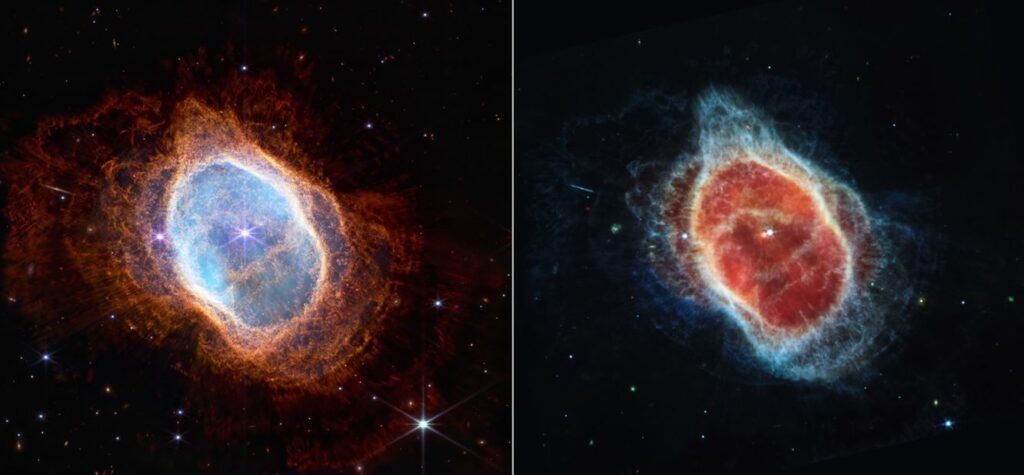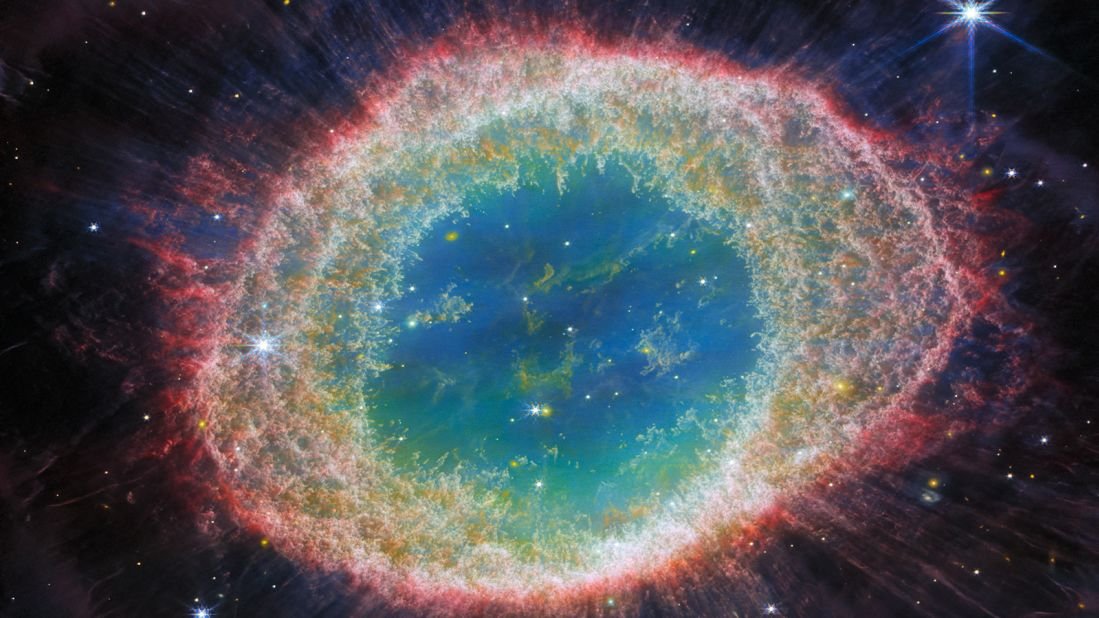Crab Nebula: An exploded star in the galaxy
The Crab Nebula is located in the constellation Taraus which is 6,500 light-years away from Earth. The NASA Webb Telescope has revealed fresh details on the composition of an exploded star.
A supernova remnant resulting from an exploded star is made up of many different components which are shown in various colors.
The doubly ionized sulfur is available in red-orange, ionized iron is in blue color while dust shows yellow-white and green color. And synchrotron emission is in white color which is a kind of electromagnetic radiation.
Huge clouds of gas bloom diagonally outward which is dominating the above image. The colors of clouds and texture range from cottony white to flaming orange to smokey blue. Blue, yellow, and red stars dot the black background.

Click here to read the updates on newly discovered dancing galaxies by NASA
The Crab Nebula is a supernova remnant in the constellation Taurus. It has also name “Messier 1 (M1) and NGC 1952”. This nebula was discovered in 1054 AD as the result of a supernova explosion. The explosion was so bright that we could see it during the day for weeks.
The Crab Nebula has a highly magnetized neutron star called a pulsar at its heart whose powerful electromagnetic radiation illuminates and energizes its intricate structure. That is a complex network of gas filaments and dust.
As a result, it is a popular subject for research in astronomy at various wavelengths of light. The importance of the Crab Nebula in astronomy is multidimensional. It is a major source for research into supernova remnants, neutron star characteristics, and the dynamics of pulsar wind nebulae.
Read More:
- Niger Fuel Tank Explosion: 48 people died after tanker-truck collision
- Jordan gunman killed three Israeli guards at West Bank border
- 30-year-old China man died from organ failure after working for 104 days
- Lamu Deputy Governor Raphael Munyua died in Nairobi Hospital
- Hillside Academy Endarasha fire outbreak killed 17 school students
- Kenyan mother donates her excess breast milk to needy newborn children
Share this content:










Post Comment